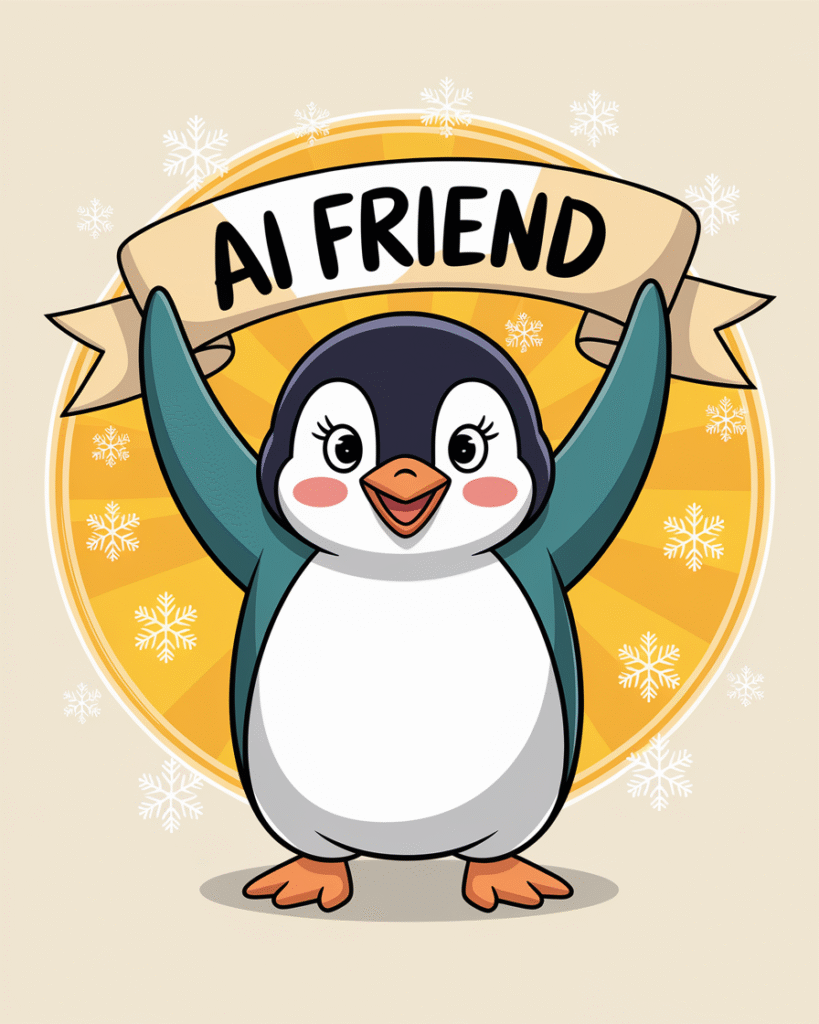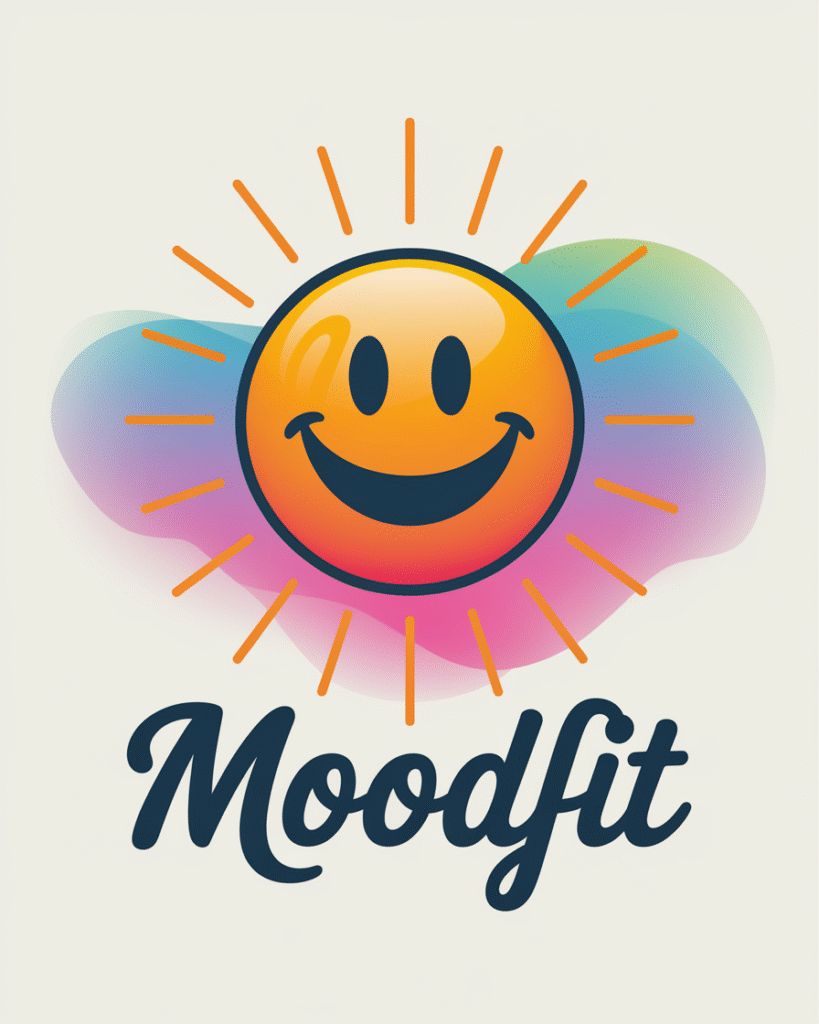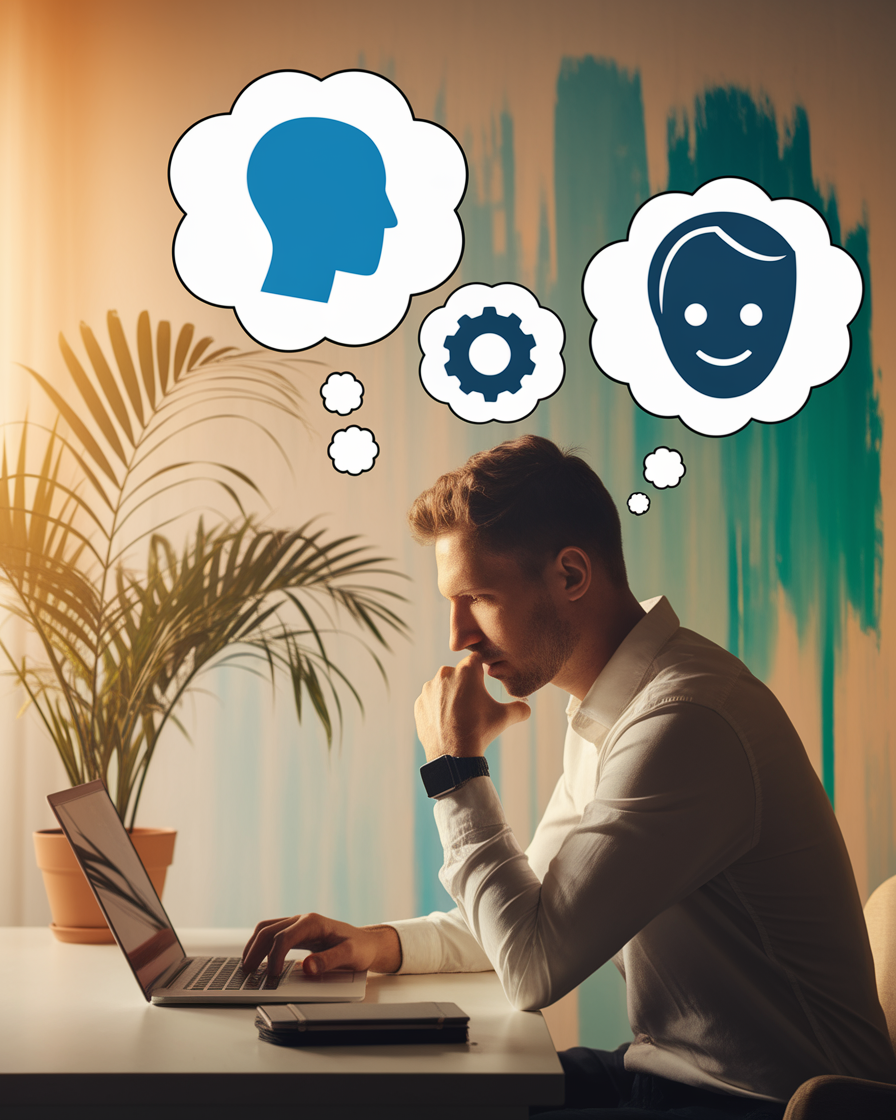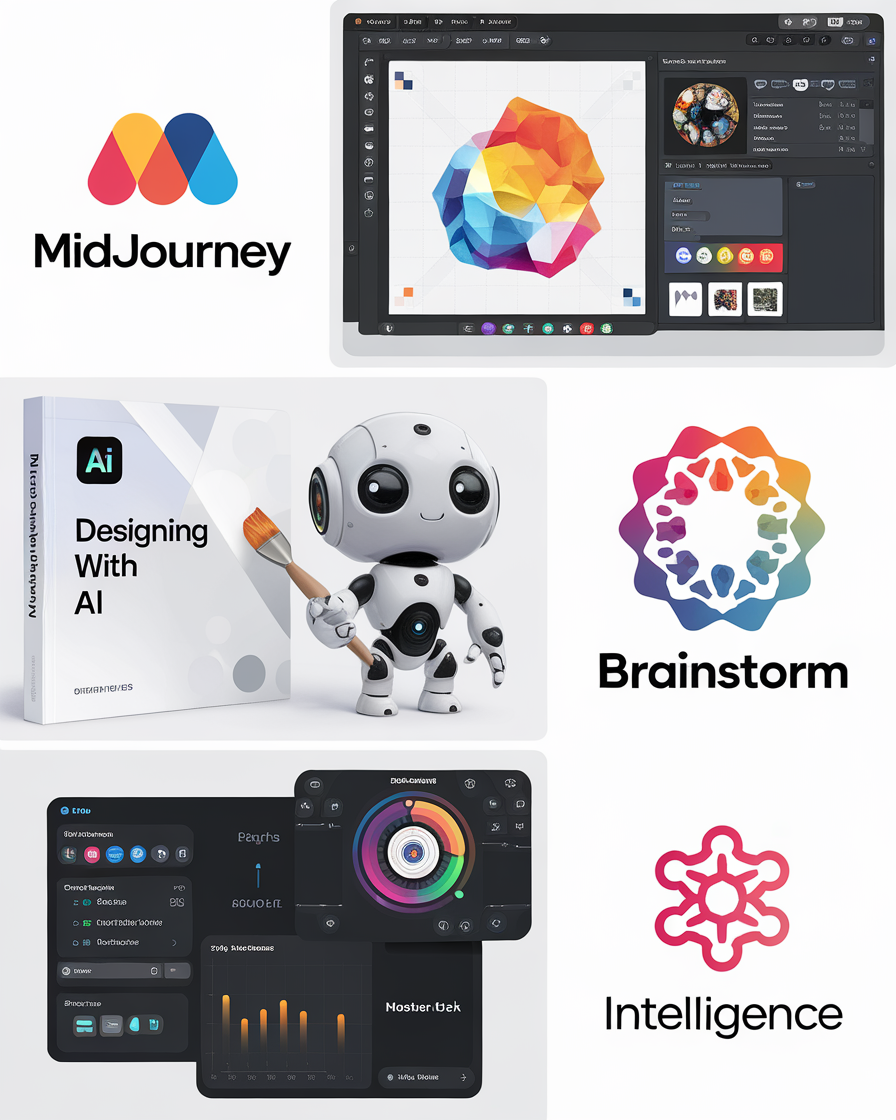Discover how AI and negative thinking can be a powerful combination for mental well-being. Learn about AI mental health tools and AI cognitive behavior support to transform your thought patterns. Start your journey to a more positive mindset today!
Introduction
In our fast-paced, interconnected world, it’s all too easy to get caught in the relentless grip of negative thinking patterns. These insidious loops of thought can drain our energy, diminish our motivation, and ultimately hinder our ability to live a fulfilling life. For centuries, humans have sought ways to break free from this mental quagmire, turning to therapy, mindfulness, and self-help. But what if there was a powerful new ally in this battle? Enter Artificial Intelligence (AI). The integration of AI and negative thinking is emerging as a revolutionary frontier in mental wellness, offering innovative solutions and personalized support previously unimaginable. This article will explore how AI mental health tools and AI cognitive behavior support can empower you to recognize, challenge, and ultimately break free from harmful thought cycles, paving the way for a more resilient and optimistic mind.
The Science Behind Negative Thinking: Understanding Cognitive Distortions
Before we dive into how AI can help, it’s crucial to understand what exactly we’re up against. Negative thinking patterns often stem from what psychologists call “cognitive distortions.” These are irrational or biased ways of thinking that can lead us to perceive reality inaccurately and, consequently, feel negative emotions.
Common cognitive distortions include:
- All-or-Nothing Thinking: Viewing situations in absolute terms (e.g., “If I don’t succeed perfectly, I’m a complete failure”).
- Overgeneralization: Drawing a sweeping conclusion based on a single event (e.g., “I made one mistake, so I’ll always mess everything up”).
- Mental Filter: Focusing solely on the negative aspects of a situation while ignoring the positive (e.g., “My presentation had one small hiccup, so it was terrible, even though everyone praised it”).
- Disqualifying the Positive: Rejecting positive experiences by insisting they don’t count (e.g., “They only complimented me because they had to”).
- Jumping to Conclusions: Making negative interpretations without any definitive evidence (e.g., “They didn’t respond to my text immediately, so they must be angry with me”). This can manifest as:
- Mind Reading: Assuming you know what others are thinking negatively about you.
- Fortune Telling: Predicting negative outcomes without factual basis.
- Magnification (Catastrophizing) and Minimization: Exaggerating the importance of negative events and minimizing the importance of positive ones.
- Emotional Reasoning: Assuming your negative emotions reflect reality (e.g., “I feel hopeless, so the situation must be hopeless”).
- Should Statements: Believing things “should” or “must” be a certain way, leading to guilt or frustration (e.g., “I should be able to handle this perfectly”).
- Labeling and Mislabeling: Attaching a negative, global label to yourself or others (e.g., “I’m a loser,” or “They’re a terrible person”).
- Personalization: Taking responsibility for events that are not your fault (e.g., “It’s my fault the team lost, even though I had a small role”).
These distorted thought patterns can become deeply ingrained, influencing our perceptions, moods, and behaviors. The good news is that these are patterns, and like any pattern, they can be recognized and rewired.
AI’s Role in Cognitive Behavioral Support
One of the most effective therapeutic approaches for addressing negative thinking is Cognitive Behavioral Therapy (CBT). CBT helps individuals identify and challenge cognitive distortions, replacing them with more realistic and positive thought patterns. Traditionally, CBT is delivered by a human therapist, but AI cognitive behavior support tools are revolutionizing access to these powerful techniques.
AI-powered CBT tools, often in the form of chatbots or interactive applications, leverage sophisticated algorithms to:
- Identify Thought Patterns: Through conversational interfaces and mood tracking, AI can analyze your inputs and identify recurring negative thought patterns, including specific cognitive distortions. For instance, if you consistently express sentiments of “always” or “never,” the AI might flag this as overgeneralization.
- Challenge Distortions with Socratic Questioning: Just like a human therapist, AI can ask probing questions to help you examine the evidence for your negative thoughts. For example, if you say, “I’m a complete failure,” the AI might respond with, “What evidence do you have to support that thought? Can you recall any instances where you succeeded, even partially?” This process helps you critically evaluate your beliefs.
- Offer Alternative Perspectives: AI can suggest more balanced and realistic interpretations of situations. It can provide examples of how someone else might view the same event, encouraging you to broaden your perspective.
- Guide Behavioral Experiments: Many AI tools integrate actionable steps to test negative beliefs in real-world scenarios. If you believe you’ll “always mess up public speaking,” the AI might suggest practicing a small presentation to a trusted friend, then reflecting on the outcome.
- Provide Psychoeducation: AI can offer concise explanations of cognitive distortions and CBT principles, helping you understand the mechanics of your own thinking and why certain techniques are effective.
Leading examples of AI cognitive behavior support tools include platforms like Woebot and Wysa. These applications are designed to provide accessible, 24/7 support, making CBT techniques available to a wider audience. Woebot, for instance, uses a conversational interface to guide users through CBT exercises, helping them manage stress, anxiety, and depression. Wysa similarly offers emotional support and resilience-building exercises, often incorporating evidence-based methods tailored to user needs. Both platforms demonstrate the significant potential of AI to deliver therapeutic interventions in a scalable and user-friendly manner.
How AI Mental Health Tools Offer Personalized Pathways to Positivity
The beauty of AI mental health tools lies in their ability to offer personalized and adaptive support. Unlike a one-size-fits-all approach, AI can learn from your interactions, preferences, and progress to tailor interventions specifically for you.
Here’s how AI provides customized pathways to break negative thinking:
- Mood Tracking and Pattern Recognition: Many AI mental health apps allow you to log your mood, journal your thoughts, and track your emotional states. AI algorithms then analyze this data over time to identify triggers, recurring negative themes, and the specific cognitive distortions you most commonly employ. This self-awareness is the first crucial step in breaking the cycle. For example, an app might notice you consistently feel anxious on Sunday evenings, leading it to suggest exploring “Sunday Scaries” or work-related stress.
- Personalized Exercises and Interventions: Based on the identified patterns, AI can recommend specific exercises, meditations, or CBT techniques. If the AI detects a strong tendency towards catastrophizing, it might offer journaling prompts to challenge worst-case scenarios or guided meditations focused on present moment awareness. If you’re struggling with self-criticism, it might suggest affirmations or self-compassion exercises.
- Real-Time Feedback and Support: AI chatbots can provide immediate responses, offering comfort, validation, or a guiding question exactly when you need it. This real-time interaction can be particularly beneficial during moments of heightened negative emotion, providing an immediate opportunity to intervene and reframe thoughts. This immediate feedback helps reinforce positive changes and prevents negative spirals from taking hold.
- Accessibility and Convenience: One of the most significant advantages of AI mental health tools is their 24/7 availability. They eliminate geographical barriers, appointment scheduling, and the stigma often associated with seeking traditional therapy. This accessibility means support is always at your fingertips, allowing you to engage with therapeutic content at your convenience.
- Gamification and Engagement: Many AI apps incorporate gamified elements, such as progress tracking, streaks, and rewards, to keep users engaged and motivated. This can make the process of challenging negative thoughts feel less daunting and more like a personal growth journey.
- Integration with Wearables: Future developments may see AI mental health tools integrating with wearables (like smartwatches) to monitor physiological indicators of stress or emotional shifts. This data can provide even more nuanced insights into your well-being and allow for proactive interventions.
For comprehensive information and resources on mental health, consider exploring reputable organizations such as the National Alliance on Mental Illness (NAMI) or Mental Health America (MHA). These organizations provide valuable insights, support networks, and further reading on various mental health topics.
Practical Tips for Using AI to Break Negative Thinking




Ready to harness the power of AI to transform your mindset? Here are some practical tips to get started and effectively break negative thinking with AI:
- Choose the Right AI Tool for You: There’s a growing array of AI mental health apps available. Research and choose one that resonates with your needs and preferences. Some popular options include:
- Woebot: Focuses on CBT principles through conversational AI.
- Wysa: Offers AI-driven emotional support and guided exercises.
- Youper: Provides personalized AI therapy based on CBT, ACT, and DBT.
- Calm & Headspace: While primarily meditation apps, they incorporate AI-driven personalization for mindfulness and relaxation, which can significantly impact negative thinking.
- Moodfit: A data-driven approach with customizable tools for action-based support.
- Replika: An AI companion for emotional support and self-reflection (note: while supportive, it’s not a clinical therapy tool).
- Before committing, many offer free trials or basic versions. Check out review sites or articles like this one on the 8 Best AI Mental Health Apps for 2025 for more detailed comparisons.
- Engage Consistently: Like any new habit, consistency is key. Make using your chosen AI tool a regular part of your routine, even for just 5-10 minutes a day. The more data the AI collects from your interactions, the better it can understand your patterns and offer tailored support.
- Be Honest and Open: To get the most out of AI, be as truthful and open as possible in your responses. The AI can only help you if it has accurate information about your thoughts and feelings. Don’t censor yourself or try to give “correct” answers.
- Actively Apply the Learnings: AI can guide you, but the real work happens when you apply the techniques in your daily life. If the AI suggests a thought challenging exercise, try it out when you encounter a negative thought. If it recommends a breathing exercise, practice it when you feel stressed.
- Combine with Other Well-being Practices: AI is a powerful tool, but it’s most effective when integrated into a holistic approach to mental well-being. Continue to prioritize:
- Mindfulness and Meditation: Regular practice can enhance self-awareness and emotional regulation.
- Physical Activity: Exercise is a proven mood booster.
- Healthy Diet and Sleep: These are foundational to good mental health.
- Social Connection: Strong relationships provide crucial support.
- Professional Help (If Needed): AI tools are excellent for support and skill-building, but they are not a substitute for licensed therapists, especially for severe mental health concerns. If you are struggling, always seek help from a qualified professional. You can find resources from organizations like the American Psychological Association or the Substance Abuse and Mental Health Services Administration (SAMHSA).
FAQ Section
Q1: Is AI a replacement for human therapy? A1: No, AI mental health tools are not a replacement for human therapists. They are designed to supplement traditional therapy, offer accessible support, and help individuals build coping skills. For complex mental health conditions or crises, professional human intervention remains essential. AI can serve as a valuable bridge to care or a complementary tool.
Q2: How accurate are AI tools in understanding emotions and thoughts? A2: AI tools are becoming increasingly sophisticated in analyzing text and voice to detect emotional nuances and thought patterns. While they can identify recurring themes and apply therapeutic techniques like CBT, they may still struggle with the depth of empathy and nuanced understanding that a human therapist provides. Their accuracy relies heavily on the data they are trained on and the honesty of user input.
Q3: Are AI mental health apps secure and private? A3: Reputable AI mental health apps prioritize user privacy and data security. They often employ encryption and adhere to data protection regulations. However, it’s always crucial to review the privacy policy of any app before using it and to be mindful of the information you share. Look for apps that clearly state their commitment to privacy and data protection.
Q4: Can AI help with specific conditions like anxiety or depression? A4: Yes, many AI mental health tools are specifically designed to help manage symptoms of anxiety, depression, and stress. They utilize evidence-based techniques like CBT and mindfulness to provide structured guidance and support. Research has shown promising results in symptom reduction for users engaging with these tools.
Q5: What are the potential limitations of using AI for negative thinking? A5: While highly beneficial, limitations exist. AI cannot fully replicate human empathy or understand complex personal contexts like a human therapist can. It may not detect subtle cues, and there’s a risk of over-reliance on the AI without developing independent coping mechanisms. Ethical concerns around data privacy and algorithmic bias also need to be continuously addressed by developers.
Conclusion
The journey to break negative thinking with AI is not about replacing human connection or traditional therapy, but about augmenting our resources in the pursuit of mental well-being. AI mental health tools provide an unprecedented level of accessibility, personalization, and immediate support, empowering individuals to take an active role in reshaping their thought patterns. By offering AI cognitive behavior support, these technologies demystify therapeutic techniques and make them available to a global audience.
As AI continues to evolve, its role in fostering a more positive and resilient mindset will only grow. Embrace these innovative tools, engage with them consistently, and remember that they are powerful allies in your personal growth journey. The future of mental wellness is here, and it’s smarter, more accessible, and more personalized than ever before.
What are your thoughts on using AI to support mental well-being? Have you tried any AI mental health apps? Share your experiences and insights in the comments below!
For More Information You can Read Our Latest Posts Here https://riseviaai.com/blog/



